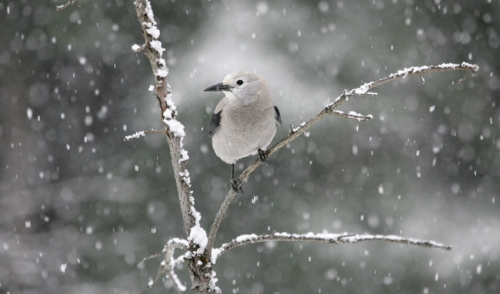{article.name}
Agway, NY -
Hometown Values & Service!
Chatham Agway: 518-392-3241
Claverack Agway: 518-851-5391
Great Barrington Agway: 413-528-2390
Millerton Agway: 518-789-4471
How Birds Survive Winter – And How We Can Help

- Share this:
- Share on Facebook
- Pin on Pinterest
- Tweet on Twitter
Falling temperatures, less food, severe storms and hungry predators all make winter a harsh season for birds, but our feathered friends have many tricks to survive even the worst winter. Savvy backyard birders who understand how birds survive can take easy steps to help so there are more amazing birds to enjoy when spring comes again.
Molting
Molting is the first step many birds take to survive the winter. For many species, this means shedding bright breeding colors in favor of better camouflage to help conceal them from winter predators. During a late summer or early fall molt, many birds also grow an extra layer of insulating down that will help keep them much warmer as temperatures drop.
To help molting birds…
Provide healthy, nutritious foods, especially good protein sources such as mealworms or suet. Feathers are made up of protein and richer sources will help feathers grow more quickly and easily. At the same time, keep pet cats indoors and take steps to deter backyard predators so less agile molting birds stay safe as they grow their new feathers.
Migration
Many birds migrate to avoid the worst ravages of winter. Instead of staying in desolate cold regions, they head for warmer ranges with rich, tropical food sources. While they will have to share those resources with residents as well as other migrating species, these warm regions are abundant and can easily support larger winter populations. Even birds that stay in the same general region may migrate slightly in winter, such as mountain birds moving to lower, gentler altitudes in winter.
To help migrating birds…
Providing safe shelter and good food sources for passing migrants can help birds reach their winter destinations. Use bright colors and splashing bird baths to attract passing birds' attention so they can refuel along the way. Encourage cities to turn off lights in glass buildings during peak migration periods so birds don't collide with windows, and work to preserve habitats in tropical regions so birds always have somewhere safe to go.
Diet Changes
Birds that stay in winter regions often change their diets so they have enough to eat during the cold season. When bugs are dormant or it's too hard to dig for worms, for example, many birds will eat more seeds, fruits, berries or nuts. Many of these birds will even store food by burying it in the ground or sticking it under leaves or bark so they have an extra supply of food to visit if they can't find other winter foods.
To help birds change their diets…
Plant berry bushes in the yard and leave fruit on trees so birds have natural food sources to visit in winter. Planting seed-bearing flowers and leaving seed heads intact for foraging winter birds is another great option. At feeders, provide seeds and nuts for birds to store, and offer other rich winter foods such as sunflower seeds, suet and peanut butter. Keeping feeders filled is essential, since winter birds will gorge on good food to build up a layer of fat for seasonal insulation.
Sharing Body Heat
Small birds may snuggle together on the coldest nights to share their body heat and keep one another warm. They often use small cavities such as hollow trees, cliff niches or even empty bird houses to huddle, and they will fluff up to give their feathers better insulation. Some bird species can even lower their body heat into a type of temporary hibernation called torpor to survive cold nights.
To help birds stay warm at night…
Leaving bird houses up year round provides instant roosting spots for winter birds, or backyard birders can add specialized roost boxes to the backyard. A brush pile or dense plantings of evergreen and coniferous plants are other great shelter options that birds will take advantage of to stay warm. If there is no brush in the backyard, add a recycled Christmas tree to the yard for temporary shelter until spring.
What Else We Can Do
In addition to helping winter birds with their natural cold weather adaptations, there are other simple steps backyard birders can take to help birds survive.
- Provide fresh, clean, liquid water in a heated bird bath so birds do not have to use precious calories to melt snow or ice to drink in winter.
- Take steps to discourage backyard predators, including neighborhood cats, raccoons, rats or other animals that might prey on winter birds.
- Keep feeders in good condition so they do not become clogged with snow or ice, and keep them clean so there is less risk of spreading diseases to winter flocks.
While birds are well-equipped to survive even the harshest winters, there are easy steps every backyard birder can take to help, and in spring, even more birds will return to enjoy each birder's generosity.
© 2026 Millerton Co-op Inc.. All rights reserved.
Serving Millerton, NY - Claverack, NY - Chatham, NY - Great Barrington, MA and the Surrounding Communities.
View our accessibility statement
Driven by New Media Retailer
Agway® is a division of Southern States®



Comments